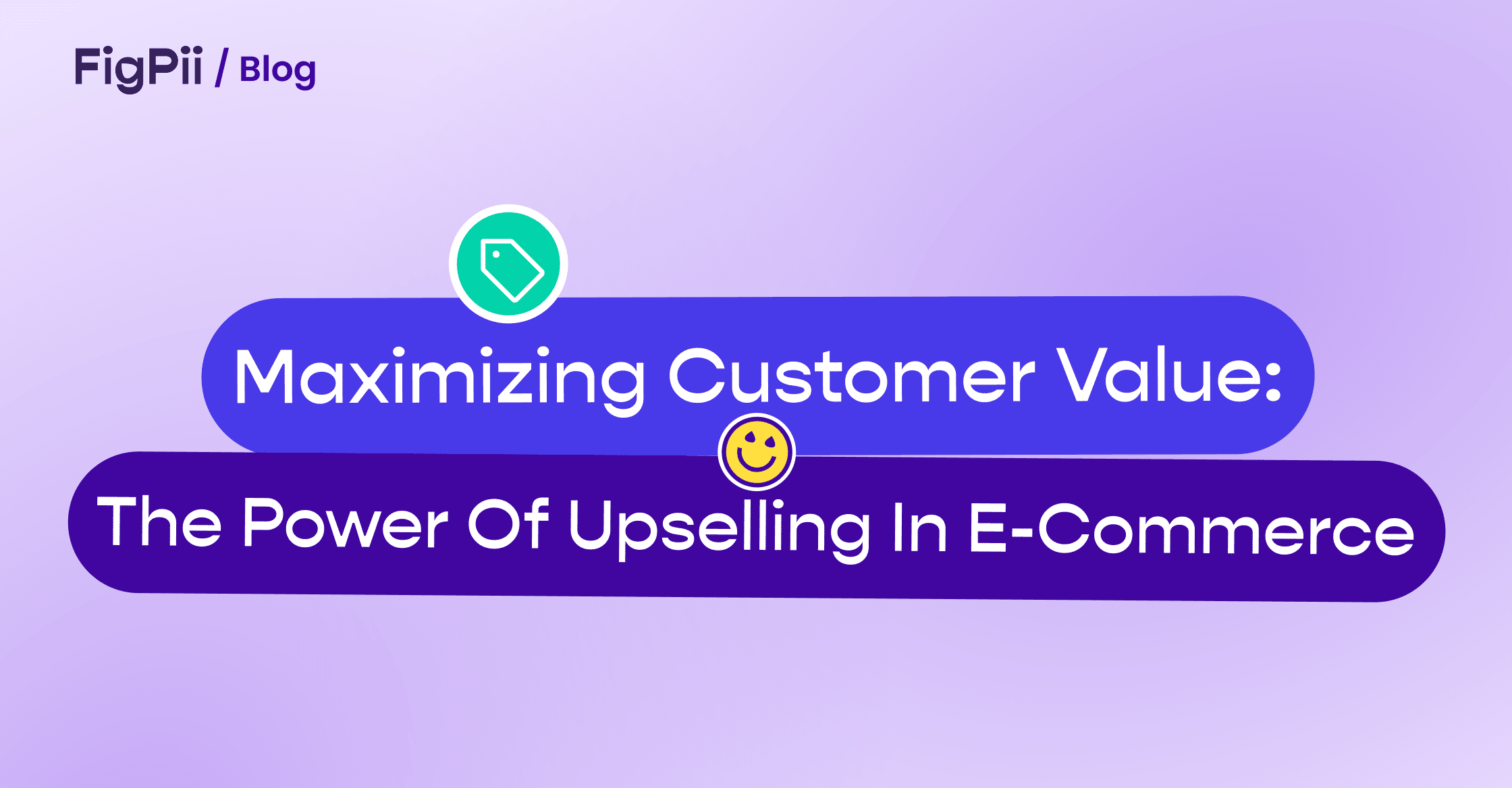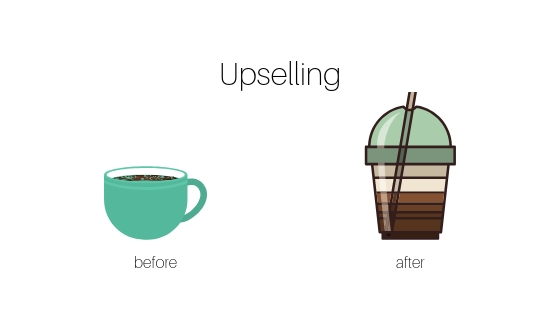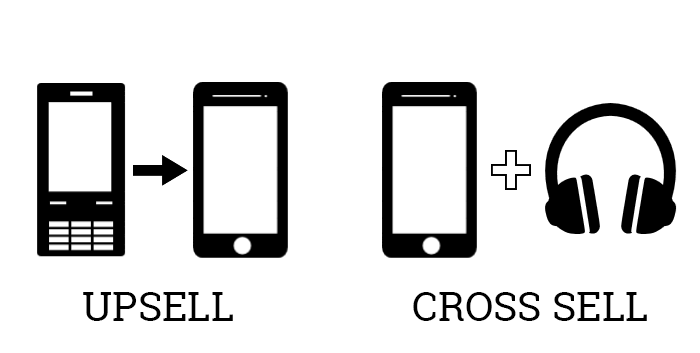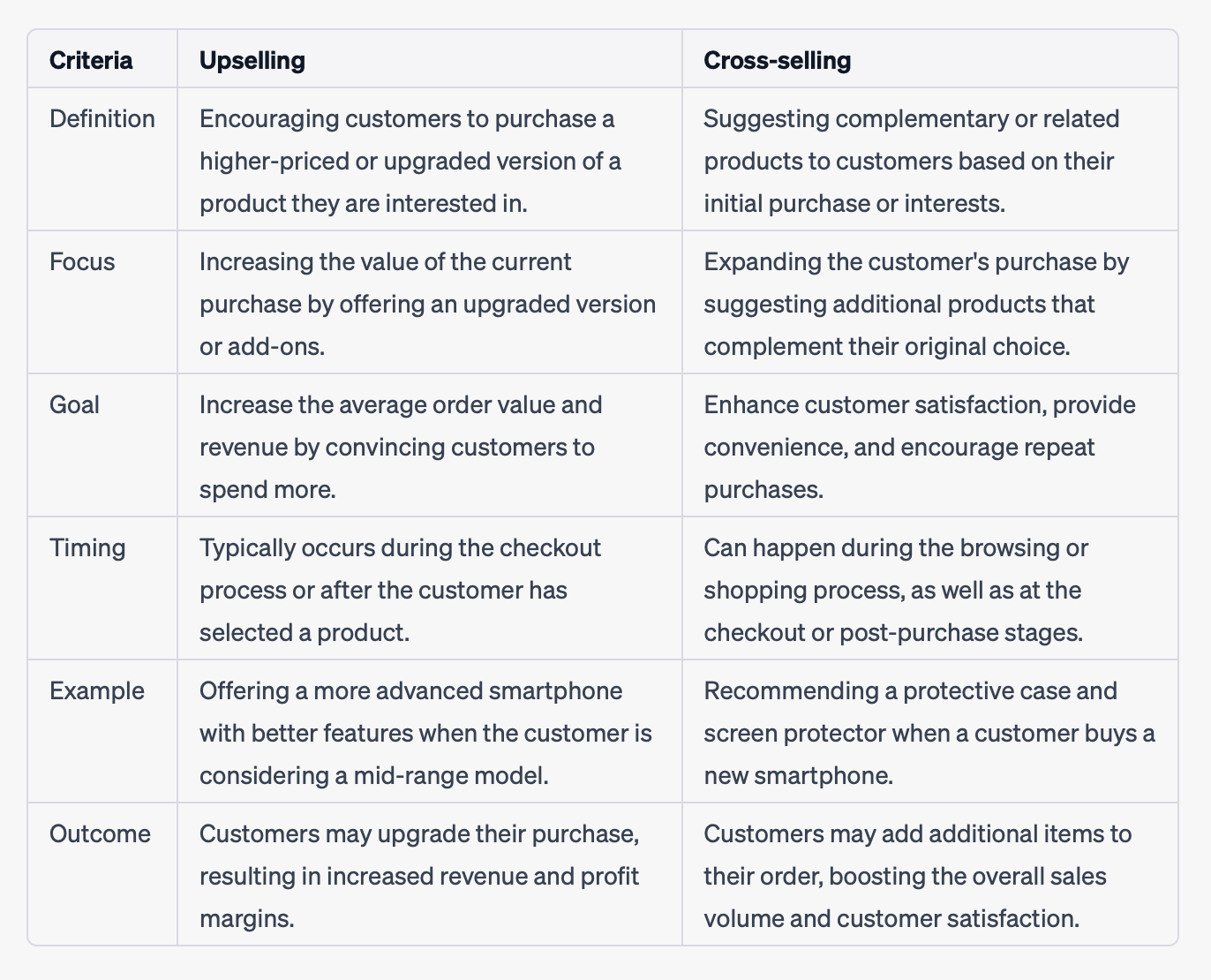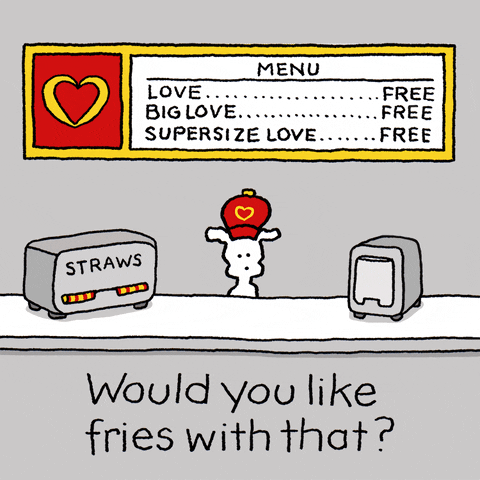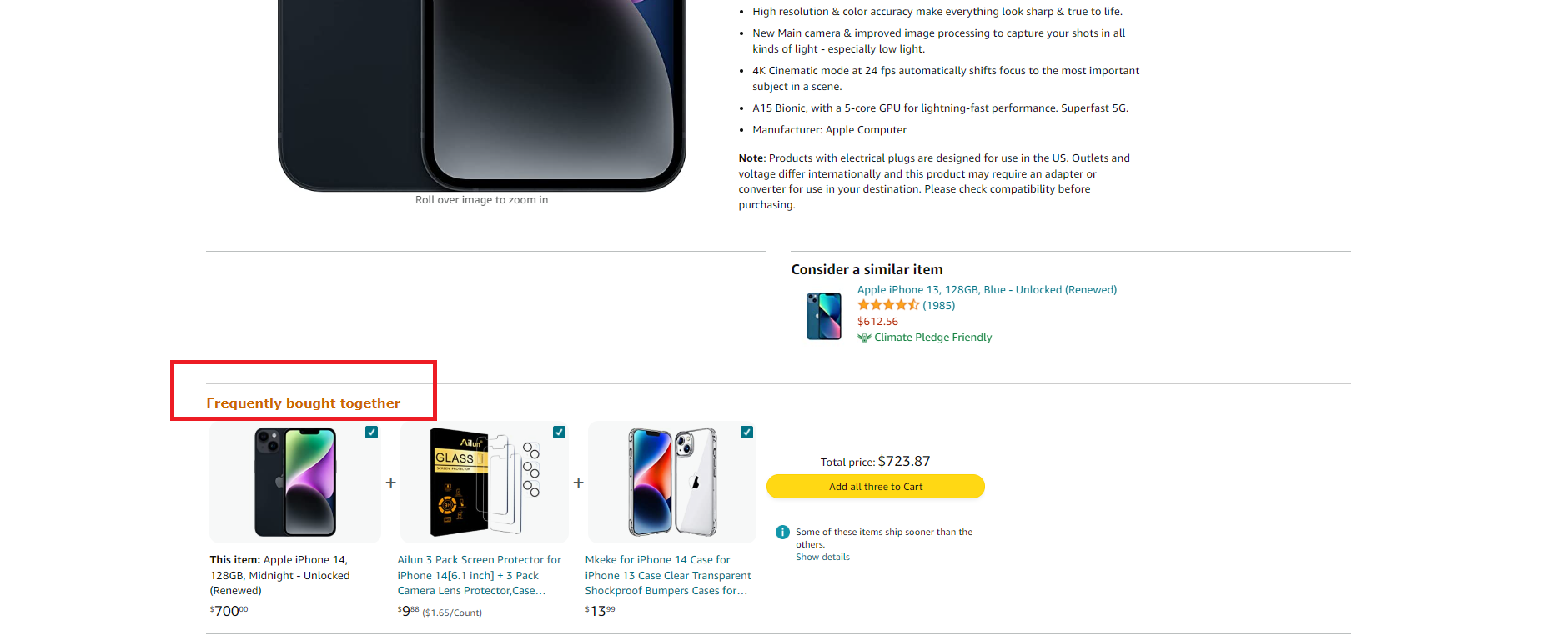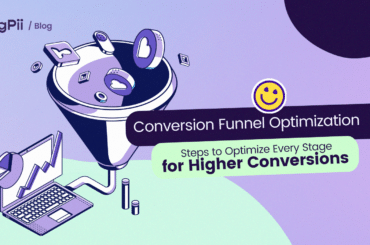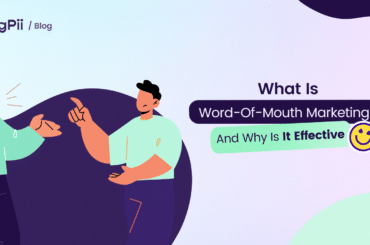Have you ever walked into a store planning to buy just one thing and walked out with a cart full of items? Or maybe you’ve gone to a restaurant for a quick bite and ended up settling for a full meal and even got a takeout to eat later? You probably have been there before.
That sales technique of persuading customers to spend more has a name: upselling.
Think of it as the art of persuading customers to purchase a higher-priced or upgraded version of a product or service they’re already interested in. Think of it as offering an irresistible deal that meets and exceeds their initial expectations.
In this article, I’ll explore the ins and outs of upselling and how it can be implemented effectively in e-commerce.
Understanding Upselling In Ecommerce
In the context of e-commerce, upselling is a strategic sales technique that aims to increase the value of a customer’s purchase by offering them additional products or upgrades that complement their original purchase.
For example, when a customer adds a small cup of coffee to their online shopping cart, the e-commerce website suggests adding a larger cup at a discounted price. The recommendation is strategically placed during the checkout process, enticing the customer to consider the upgrade and potentially increase their order value.
It’s like adding that extra sprinkle of goodness to their shopping experience. Instead of just settling for the initial purchase, you seize the opportunity to offer customers something extra that enhances their overall satisfaction and brings them even more value.
Upselling is not about pressuring customers or making them feel they’ve made the wrong choice. It’s about presenting them with valuable options they may not have considered initially.
Upselling vs. Cross-selling: What’s the difference?
Upselling, as we’ve discussed, is a sales technique that involves offering existing customers a higher-end or more advanced version of the product they are considering or have already chosen.
On the other hand, cross-selling focuses on suggesting complementary or related products to the one a customer is considering or has already purchased. It’s about identifying items that go hand in hand with their original choice, enhancing their experience, or fulfilling additional needs.
Cross-selling aims to expand the customer’s purchase by offering them products that complement their initial selection. In a zoomed-in view, you can tell that ecommerce businesses use both upselling and cross-selling sales techniques to increase the average order value as well as the customer lifetime value.
Simply put, upselling encourages customers to “go up” or upgrade their purchase, while cross-selling encourages them to “go across” and consider related or complementary products.
Benefits of Upselling
Why is upselling such a game-changer in the world of e-commerce?
It allows you to capitalize on the customer’s buying momentum. You tap into their desire for a more comprehensive or premium experience by suggesting relevant upgrades or complementary items at the right moment.
Here are some key benefits and the potential impact of implementing effective upselling strategies in your e-commerce business:
-
Increased Average Order Value (AOV)
Upselling can significantly boost your AOV or increase revenue by encouraging customers to add higher-priced or upgraded products to their cart. For instance, if a customer is considering purchasing a laptop, you can upsell them to a model with more RAM or additional features.
-
Enhanced Customer Experience
For example, if someone is buying a camera, you can upsell them to a lens kit or a camera bag. This personalized approach builds trust, improves customer satisfaction, and encourages repeat purchases. Upselling done right can enhance the overall shopping experience for your customers.
Additionally, using a call center to provide personalized support and assistance can further contribute to enhancing customer experience and retention
-
Improved Customer Retention and Loyalty
Upselling can foster long-term customer relationships and loyalty when you consistently offer valuable upgrades and personalized recommendations to improve their experiences.
-
Upselling as a Customer Education Tool
Upselling allows you to educate your customers about the full range of products and solutions you offer. For instance, a subscription-based service can upsell customers to a premium plan with additional features, demonstrating how it can save time and unlock more advanced functionalities.
-
Upselling for Cross-Selling Opportunities
Effective upselling can create opportunities for cross-selling complementary products. When you understand your customers’ needs and suggest related items, you can increase their overall purchase value while providing a convenient and holistic shopping experience.
Strategies for Successful Upselling
Upselling can only be successful when it is properly planned and executed. It’s easy to assume that you could just suggest similar but better products every time a customer tries to make a purchase, but there’s no guarantee that it will always yield positive results.
-
Segmenting Customers
When it comes to successful upselling, one of the most powerful strategies is segmenting your customers and tailoring your upselling offers to their specific needs and preferences.
Think of it as offering a personalized shopping experience that makes each customer feel seen and understood.
For example, let’s say you run an online fashion store. Through segmentation, you might identify one segment of customers who frequently purchase designer brands while another segment leans more toward budget-friendly options. With this knowledge, you can craft targeted upselling offers for each group.
-
Analyzing Purchase History
Never underestimate the power of analyzing purchase history. It’s like having a secret decoder ring that unlocks the door to understanding your customers’ needs and desires.
Imagine you have a customer named Sarah who recently bought a pair of running shoes. You dig deeper into Sarah’s purchase history instead of moving on to the next customer.
As you analyze her past purchases, you notice she’s also bought a running jacket, a fitness tracker, and a yoga mat. This tells you that Sarah is not only a runner but someone who is also interested in maintaining an active and healthy lifestyle.
With this knowledge, you can tailor your upselling strategy to offer complementary products that align with her interests.
-
Utilizing Product Bundling
Product bundling is like creating a special package deal by combining complementary products that go hand-in-hand. It’s a way to offer customers a more comprehensive solution or an enhanced experience while increasing their overall purchase value.
The beauty of product bundling is that it encourages customers to think beyond individual items and consider the bigger picture.
The key to successful product bundling is to identify items that naturally complement each other and create a compelling offer that customers can’t resist. It’s all about providing them with a seamless and enhanced experience, making them feel like they’re getting more value for their money.
-
Timing and Placement
Timing and placement play a crucial role here. You want to strategically present relevant upsell offers to your customers at the right moments, ensuring they feel genuinely valuable rather than intrusive.
Doing so increases their chances of accepting the offer and enhancing their overall shopping experience.
The trick is to strike the right balance between timing and placement. You want to engage customers when they are most receptive without overwhelming or distracting them from completing their initial purchase.
-
Persuasive Product Recommendations
You want to maximize the value your customers get from their purchases, and that’s where persuasive product recommendations come into play.
Personalized recommendations are crucial for effective upselling. Customers feel understood and valued when they see recommendations curated explicitly for them. This personal touch increases the relevance and appeal of the upsell offers, making them more likely to say yes.
Let’s talk about social proof. People often look to others for guidance when making purchasing decisions. You can build trust and credibility by showcasing positive reviews, ratings, or testimonials from satisfied customers who have bought the recommended products or upgrades.
Also, the scarcity technique taps into the fear of missing out. When they feel that the opportunity to get the upsell offer is scarce, they’re more likely to act quickly to avoid missing out on something valuable.
Implementing Upselling Techniques
When it comes to implementing the upselling techniques discussed above, there are a few important things to note, including;
-
Optimizing Website Design
The first step is ensuring your website design is clean, simple, and easy to navigate. You don’t want your customers to feel overwhelmed or confused when browsing your site. Use clear and concise language, high-quality images, and intuitive navigation to guide customers toward the products they’re looking for.
Next, you want to ensure that your upsell options are prominently displayed and easy to find. Consider placing them on the product, shopping cart, or checkout pages. Use eye-catching graphics, persuasive language, and clear pricing to make your upsell offers stand out.
-
Clear and Compelling Messaging
When it comes to upselling, your messaging plays a significant role in capturing customers’ attention and motivating them to consider additional products or upgrades.
When crafting product descriptions for your upsell offerings, focus on the unique benefits and value they provide. Use descriptive language that paints a vivid picture of the benefits they will enjoy.
Also, communicate the value customers will receive by accepting the upsell offer. This can include cost savings, time savings, convenience, or any other tangible or intangible benefits.
-
Testing and Iteration
Testing and iteration are essential for any successful upselling strategy. By continuously testing and refining your upselling techniques, you can optimize your approach based on data-driven insights and increase your chances of success.
When testing, here are the essential things to consider:
- Set clear goals and metrics: Before testing, define your goals and the metrics you’ll use to measure your upselling success. This can include conversion rates, average order value, and revenue per customer.
- Experiment with different approaches: Test various upselling techniques and approaches to see which ones work best for your audience and products. Use A/B testing or other methods to compare the performance of different approaches and identify the most effective ones.
- Analyze and refine: Once you’ve collected data from your tests, analyze the results and use them to refine your upselling strategy. Identify patterns or trends in customer behavior and use this information to make data-driven decisions.
Overcoming Challenges and Pitfalls
Upselling, like any marketing strategy, comes with its own set of challenges. It’s important to know these challenges and understand how to navigate them successfully. Let’s dive into the different ways of avoiding these pitfalls associated with upselling.
-
Balancing Customer Experience
Imagine this: You walk into a store looking for a specific product, and as soon as you enter, the salesperson bombards you with upsell offers left and right, pressuring you to spend more. How does that make you feel? You are likely overwhelmed and annoyed, right?
When upselling, it’s essential to strike a delicate balance. On one hand, you want to maximize the value for your customers and increase their satisfaction by offering them additional products or upgrades that truly enhance their experience.
On the other hand, you want to avoid coming across as pushy, aggressive, or disruptive, as that can harm the overall customer experience and damage your brand reputation.
To achieve this balance, it’s important to approach upselling to provide additional value and meet customer needs rather than solely focusing on increasing sales.
-
Pricing and Value Perception
When it comes to pricing, customers are always looking for value. They want to feel that their price is justified by the benefits and value they receive. As a marketer, it’s your job to strike that delicate balance between offering a compelling upsell at a reasonable price while ensuring customers perceive it as valuable.
One approach is to emphasize the unique benefits and added value that comes with the upsell. Highlight how the additional product or upgrade enhances the customer’s experience, solves a problem, or saves time and effort.
Another tactic is to create pricing packages that offer tiered options, catering to customers with different budgets and needs. This price flexibility can help address pricing objections and increase the likelihood of upsell acceptance.
Understanding your customers’ perception of value and aligning your pricing strategy accordingly is key to achieving upselling success.
-
Avoid Overwhelming Customers with Upselling Offers
To overcome this challenge, it’s crucial to strike the right balance. Instead of bombarding customers with a barrage of upselling options, focus on presenting them with a select few that are relevant and valuable.
Put yourself in your customers’ shoes and consider what additional products or upgrades would genuinely enhance their experience or provide meaningful benefits.
Consider the customer’s journey and where it makes the most sense to present the upselling options. For instance, you can strategically offer one or two relevant upsells that complement the customer’s chosen product during checkout.
Upselling Case Studies and Success Stories
Let’s look at some real-life applications of upselling and its impact on businesses.
-
McDonald’s Meal Combo: “Would You Like Fries With That”
A lot of people are familiar with the famous McDonald’s upsell catchphrase.
“Would you like fries with that”
It represents a classic example of suggestive selling, where the restaurant employee suggests adding a side of fries to a customer’s order.
The phrase is used during the ordering process when a customer selects a main item, such as a burger or sandwich. The employee then asks if the customer would like to add fries to their order, implying that the meal would be more satisfying or complete by adding this side item.
This upselling technique is effective for several reasons. First, fries are a trendy and iconic item on McDonald’s menu, making them a natural choice to suggest.
Second, the phrase is simple, direct, and easy to understand, requiring minimal effort from the employee and customer.
According to a study, this simple phrase accounts for 15-40% of Mcdonald’s annual revenue.
-
Amazon’s “Frequently Bought Together” and “Customers Who Bought This Also Bought”
On product pages, Amazon displays sections that showcase items frequently bought together or products that customers commonly purchase with the selected item.
These recommendations not only expose customers to additional options but also create a sense of social proof, as they are based on the buying patterns of other shoppers.
The then-CEO of Amazon, Jeff Bezos, revealed that 35% of sales on the Ecommerce platform were due to cross-selling and upselling.
Over To You!
Upselling is a powerful revenue driver. Businesses can significantly increase their average order value by encouraging customers to consider higher-priced or upgraded options. This means that for every transaction, the customer spends more, leading to a direct boost in revenue.
Upselling taps into the principle of maximizing customer value, allowing businesses to capitalize on additional sales opportunities and generate more profits without acquiring new customers.
The real challenge with upselling is figuring out how to make these offers without coming off as pushy and without ruining the user and customer experience. However, with the strategies discussed in this piece, you should be able to make headway.
In summary, upselling is vital for e-commerce businesses because it can drive revenue growth and enhance customer experience. Furthermore, if done right, it enables businesses to deliver exceptional customer experiences, fostering loyalty and advocacy.
Frequently Asked Questions On Upselling
What is upselling in e-commerce?
Upselling in e-commerce refers to the practice of encouraging customers to purchase a higher-priced or upgraded version of a product they are interested in.
How does upselling benefit e-commerce businesses?
Upselling benefits e-commerce businesses by increasing the average order value, boosting revenue and profit margins, and maximizing customer lifetime value.
What are some effective strategies for implementing upselling in an e-commerce store?
Effective strategies for implementing upselling include offering relevant and compelling product upgrades, showcasing the value and benefits of the upsell, using persuasive messaging, and strategically placing upsell offers during the checkout process.
Should I offer discounts or promotions when upselling?
Offering discounts or promotions can be effective in upselling by incentivizing customers to opt for the higher-priced option, but it’s important to consider the impact on profit margins and overall pricing strategy.
How can I determine which products or upgrades to recommend for upselling?
To determine which products or upgrades to recommend for upselling, analyze customer data, consider popular add-ons or complementary items, and identify opportunities where customers may benefit from higher-priced options.
What is the best time to present upsell offers to customers?
The best time to present upsell offers to customers is typically during the checkout process or immediately after they have selected a product, as it capitalizes on their existing purchase intent.
How can I personalize upsell recommendations for individual customers?
Personalize upsell recommendations by leveraging customer data such as past purchases, browsing history, and preferences. Use segmentation and targeting techniques to deliver tailored offers.
Are there any potential risks or drawbacks to upselling in e-commerce?
Potential risks of upselling in e-commerce include overwhelming or annoying customers with excessive offers, potentially leading to cart abandonment or negative customer experiences. Balancing the frequency and relevance of upsells is crucial.
How can I measure the success of my upselling efforts?
Measure the success of upselling efforts by tracking key metrics such as average order value, conversion rates, revenue generated from upsells, and customer feedback or satisfaction scores.
Are there any specific tools or plugins available to facilitate upselling in an e-commerce platform?
Many e-commerce platforms offer built-in features or plugins that facilitate upselling, such as product recommendation engines, cart upsell pop-ups, and personalized email marketing tools. Explore the available options and choose the ones that align with your specific platform and business needs.

